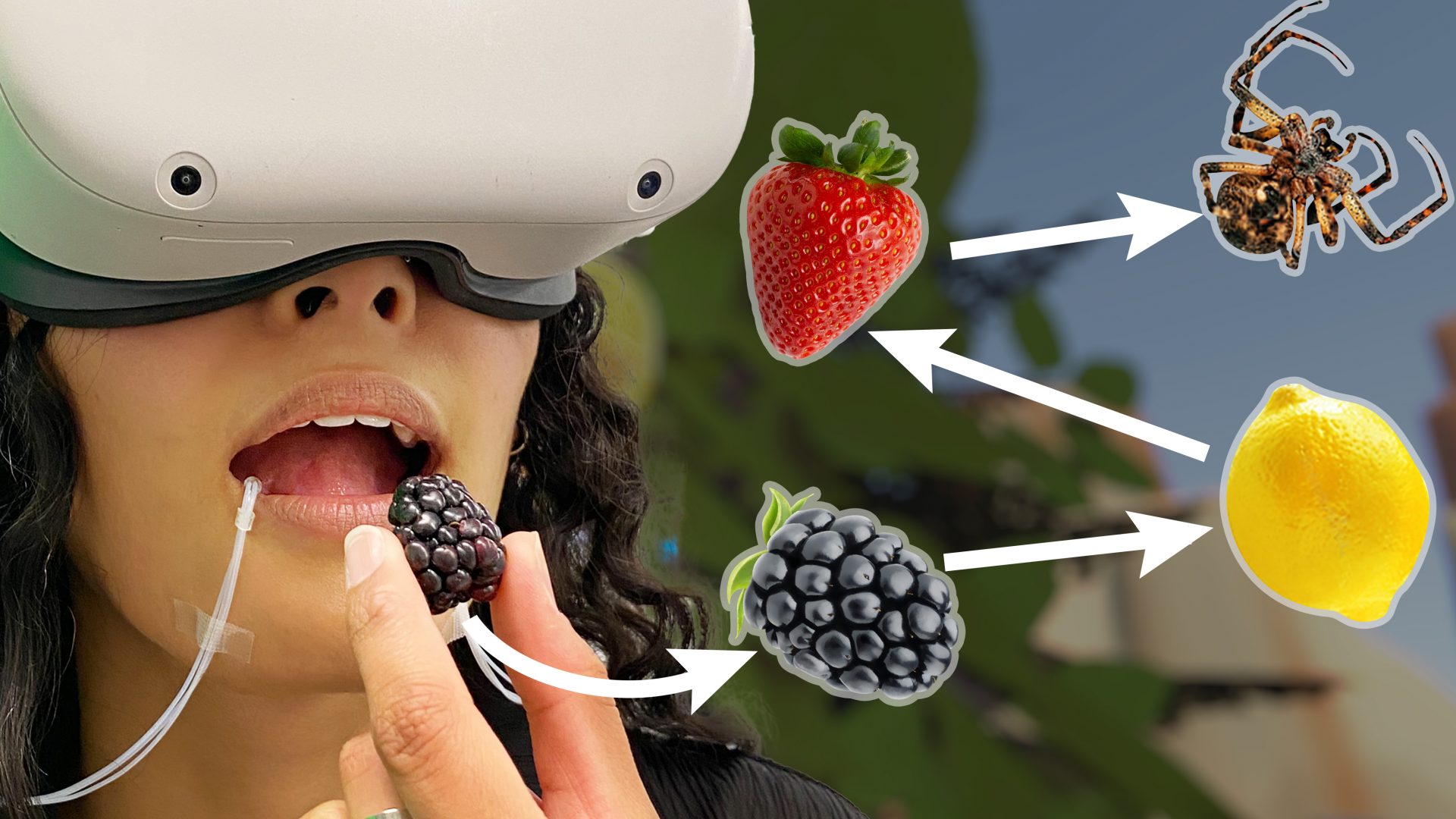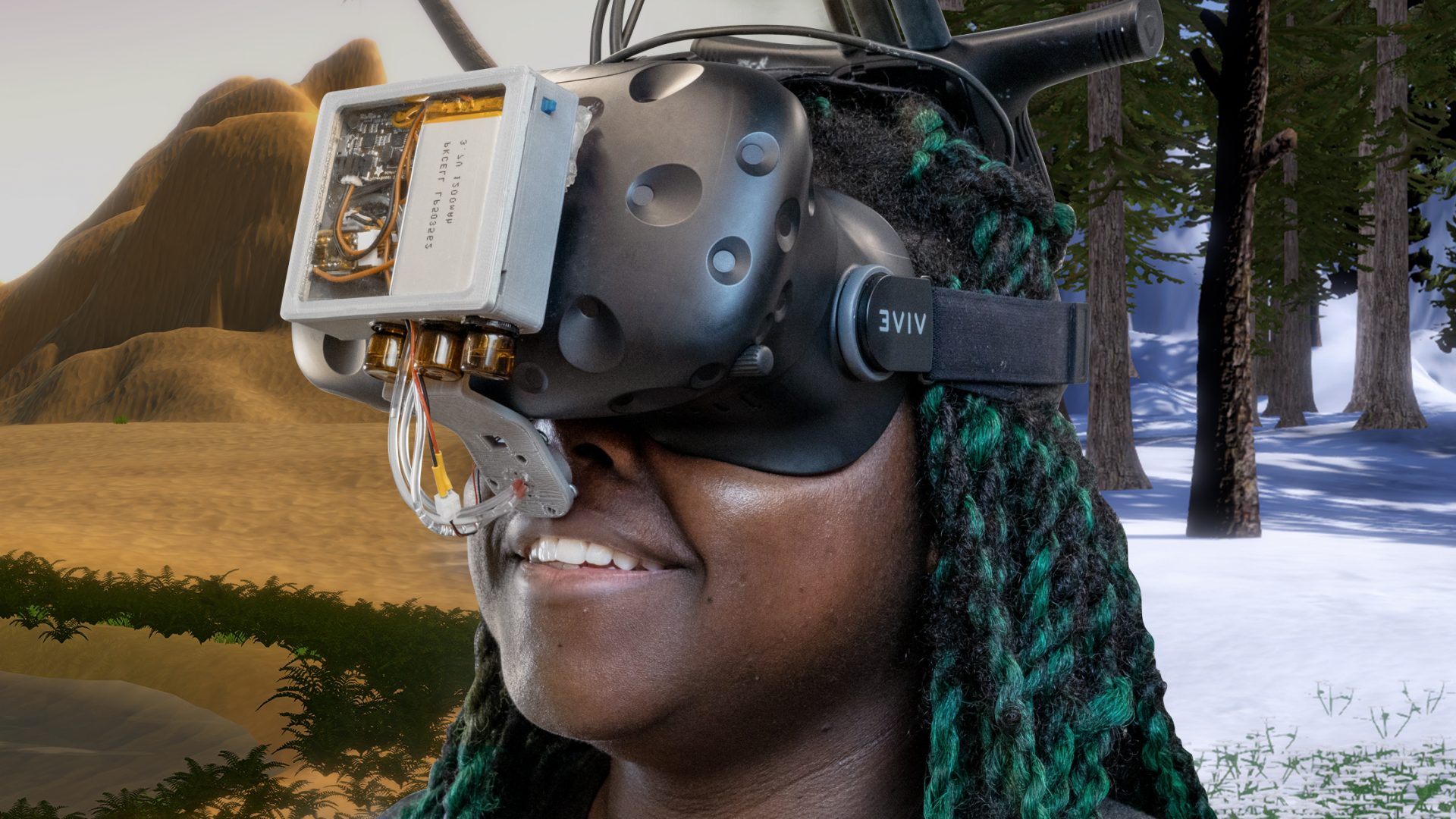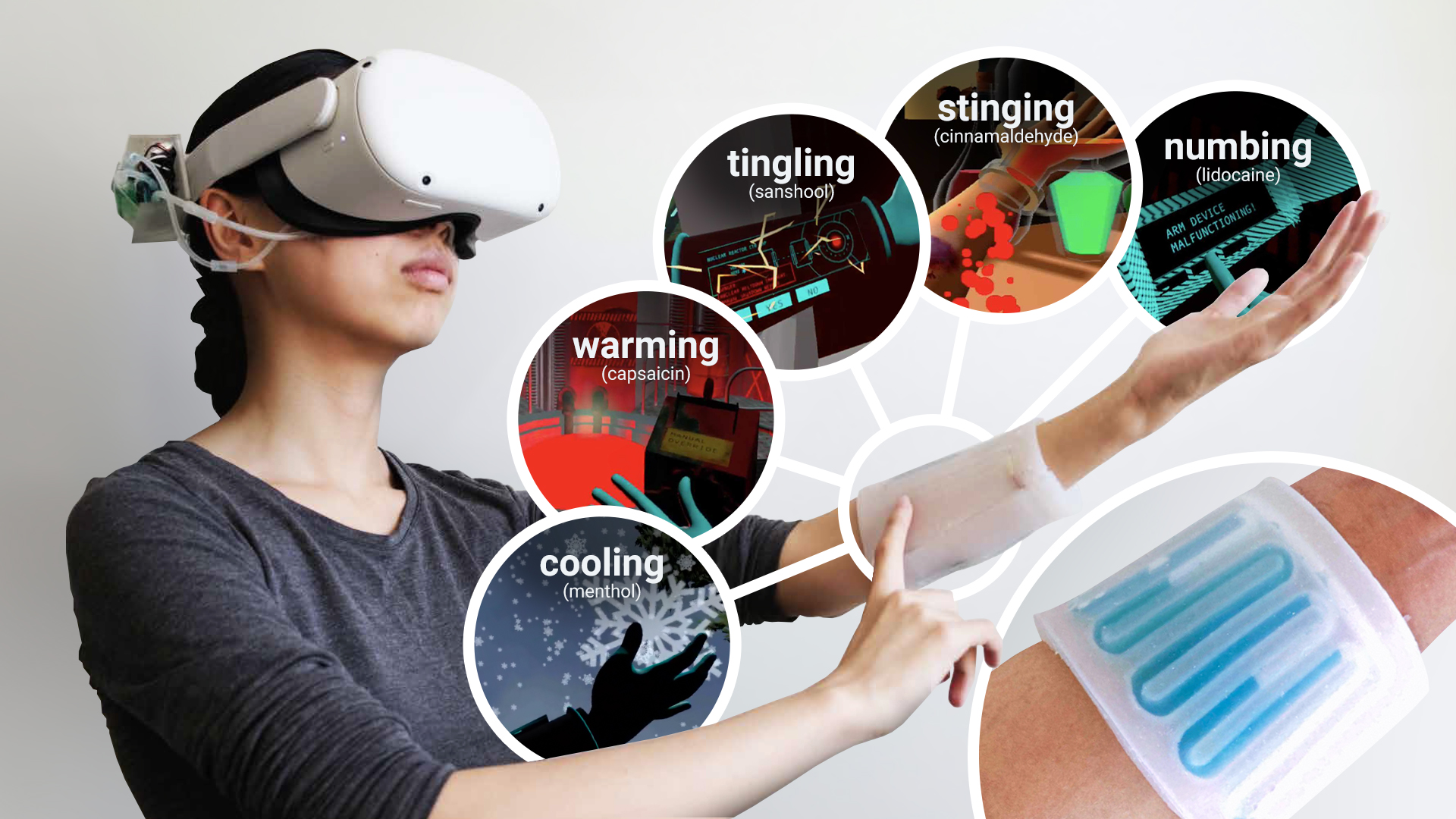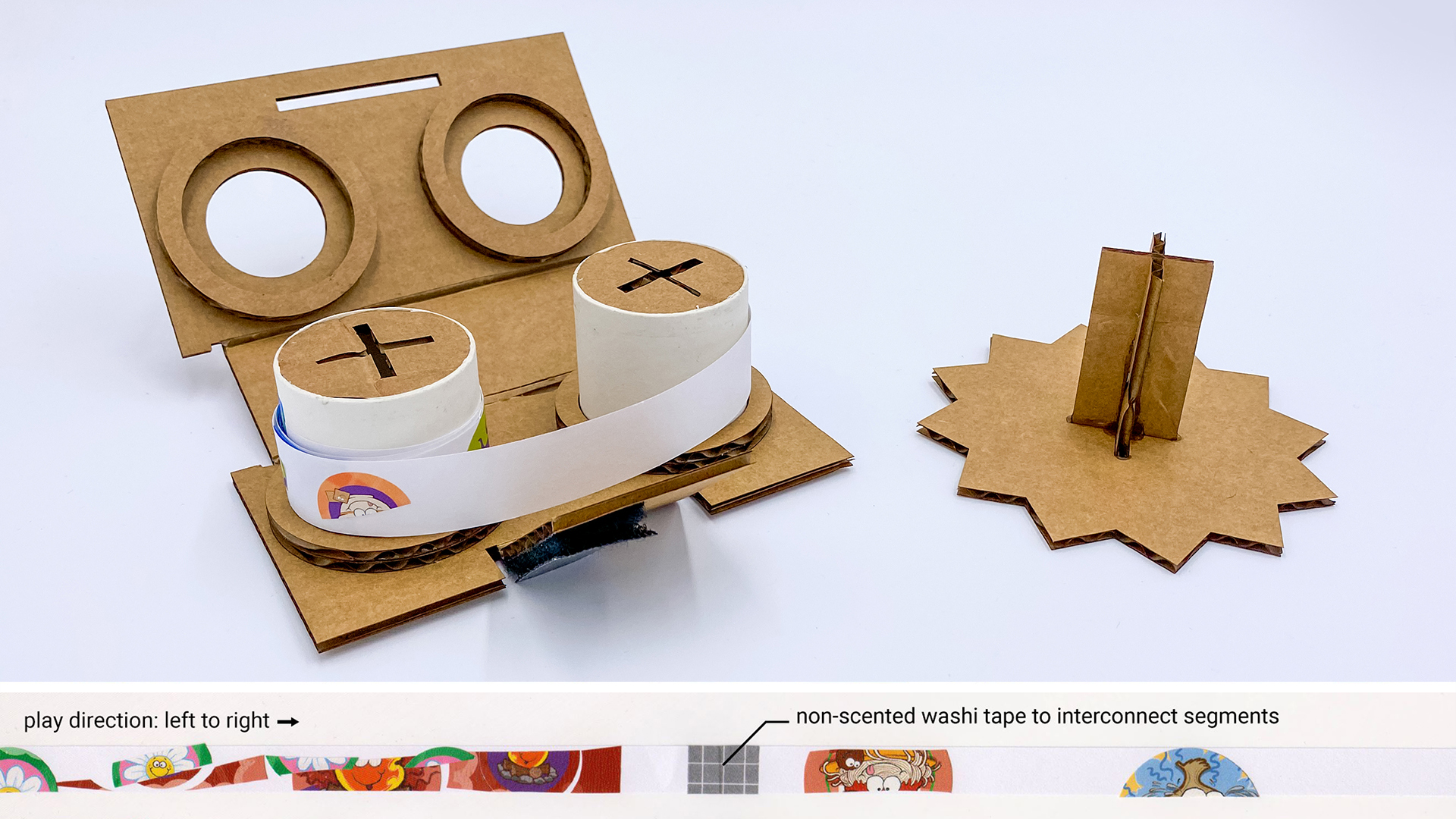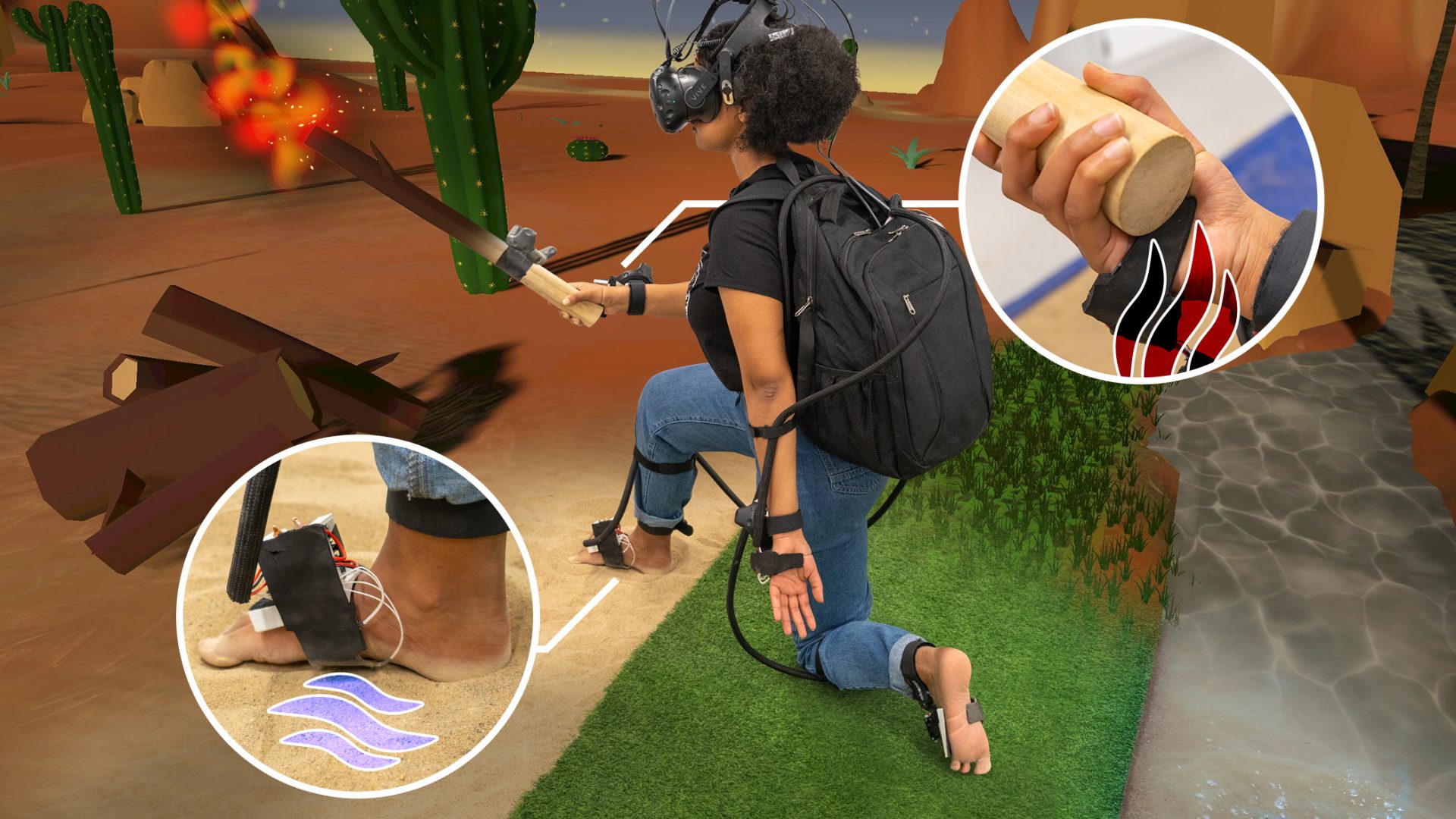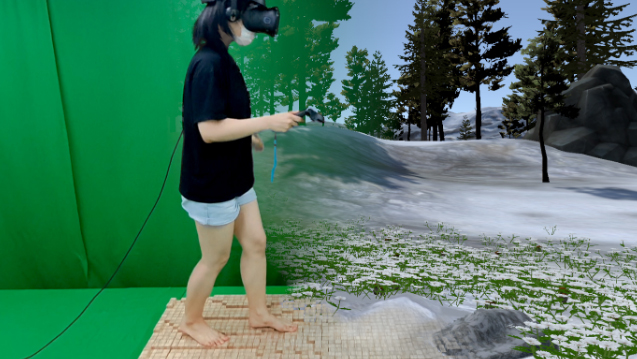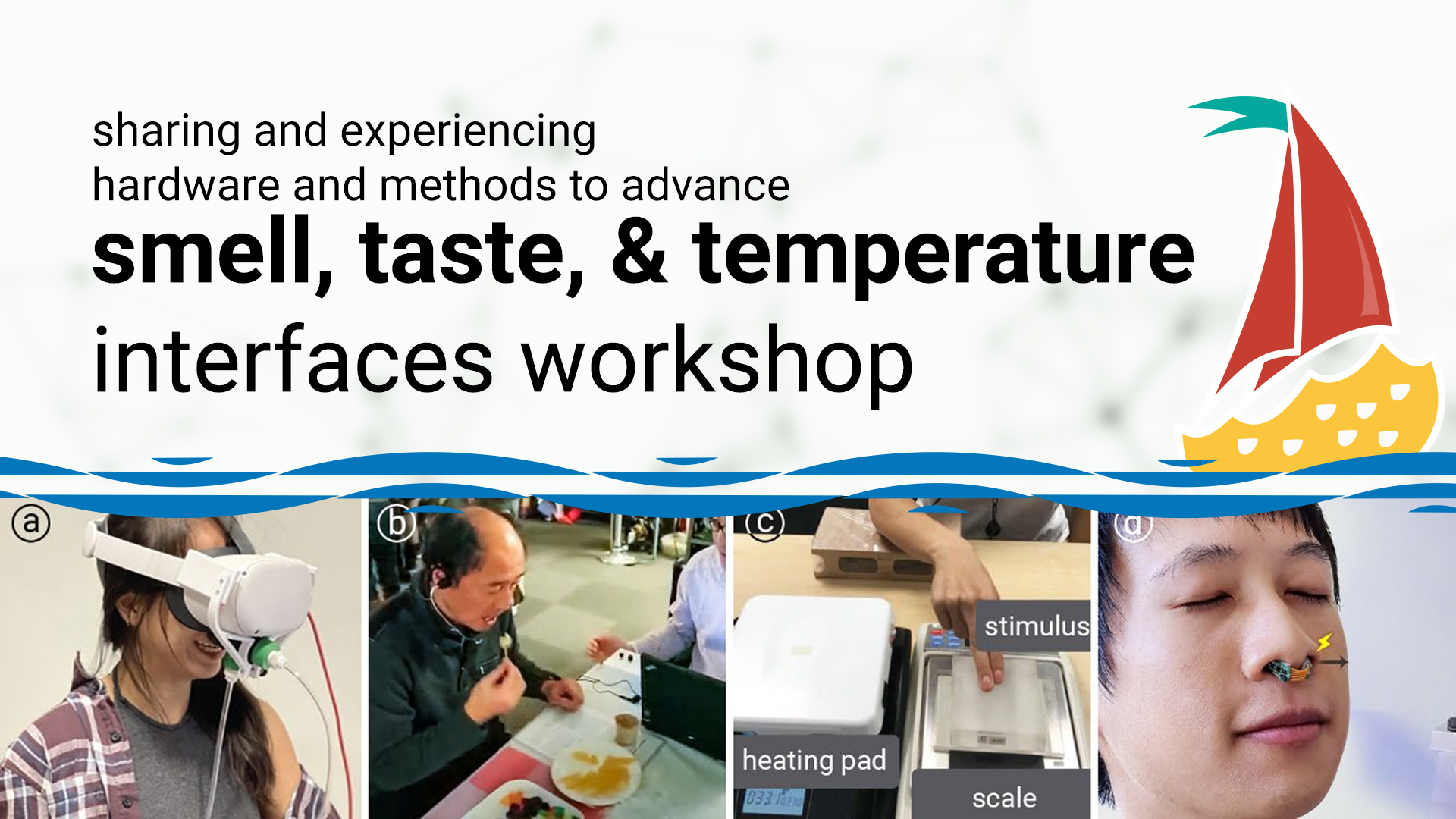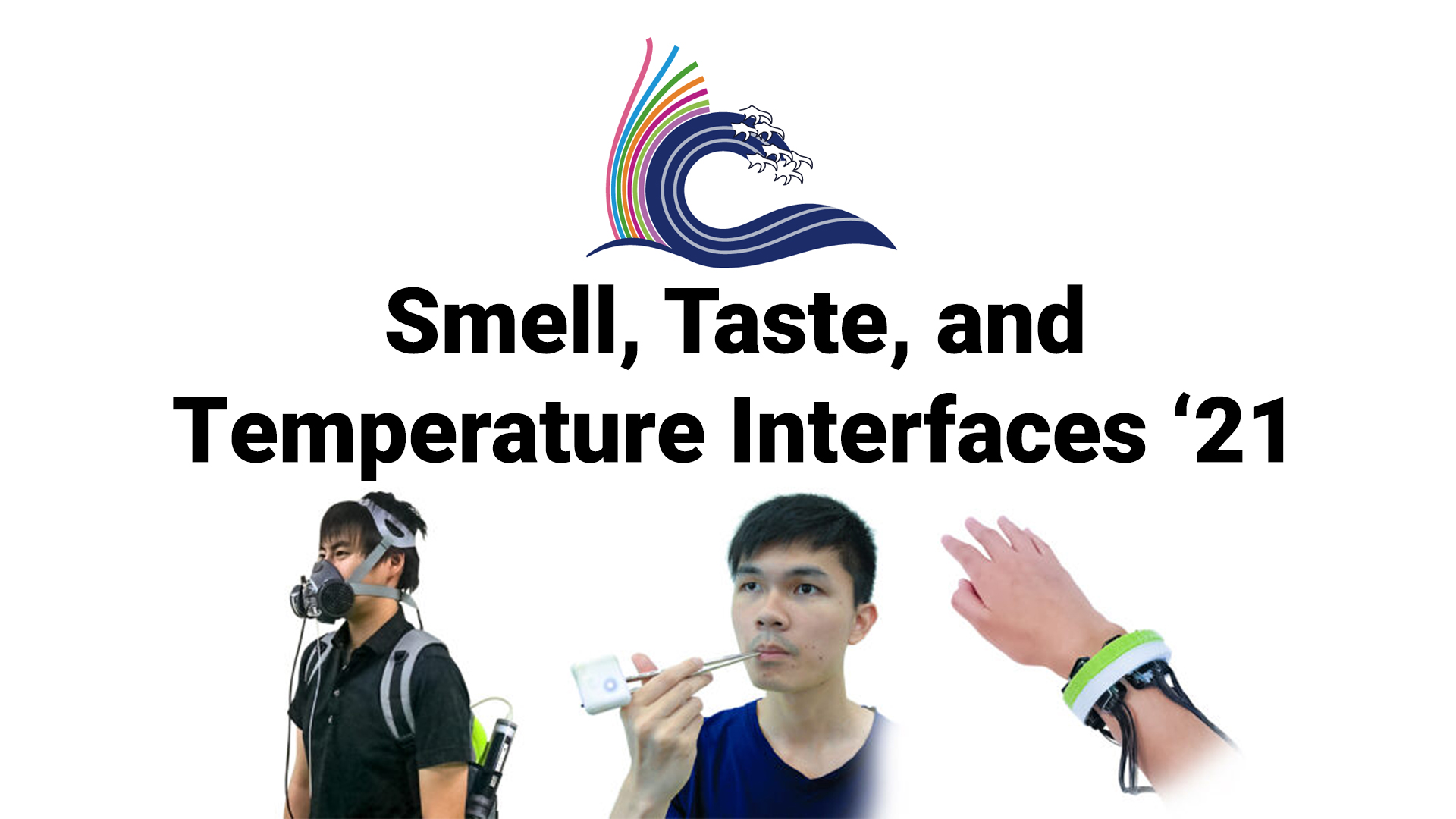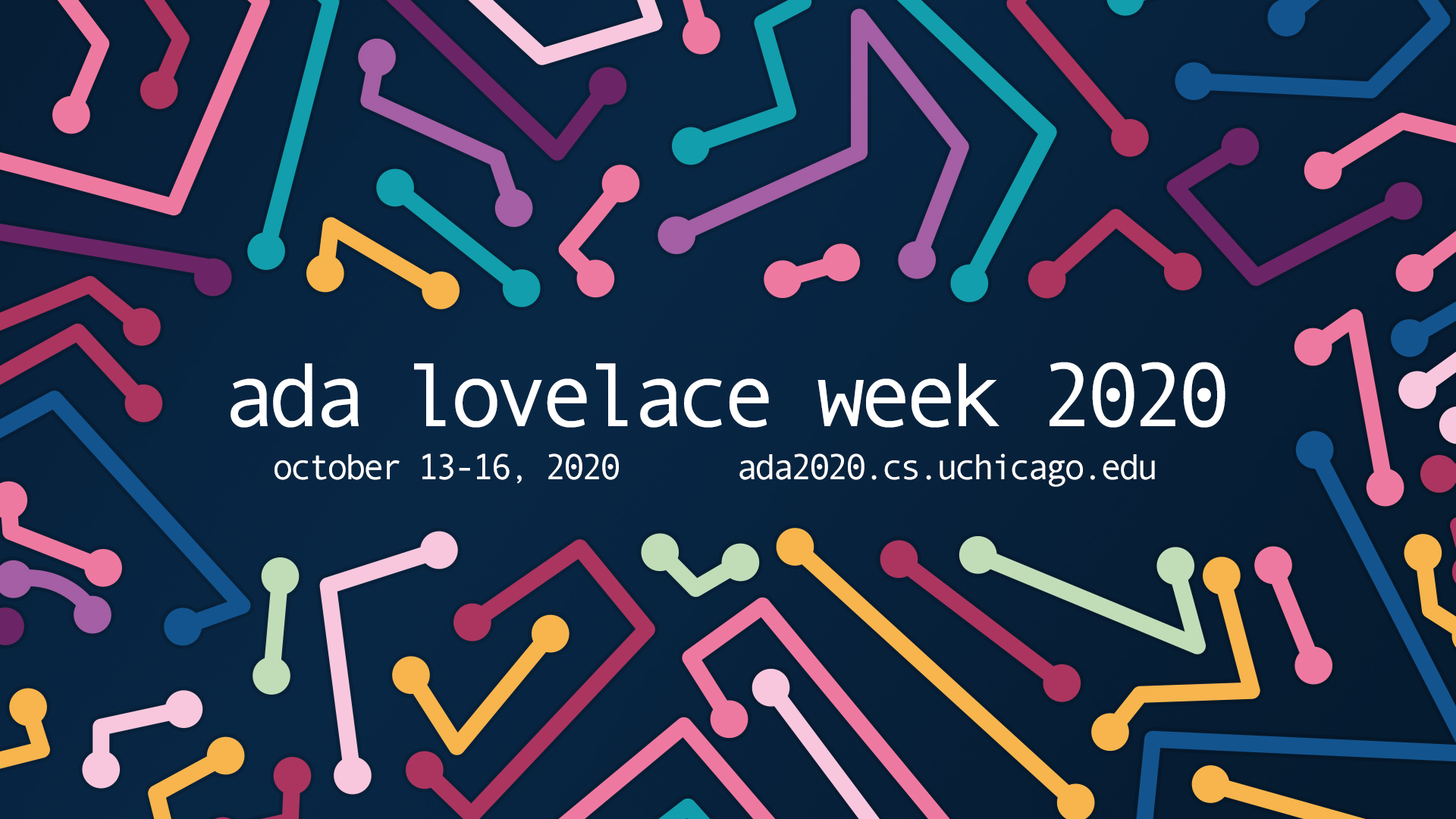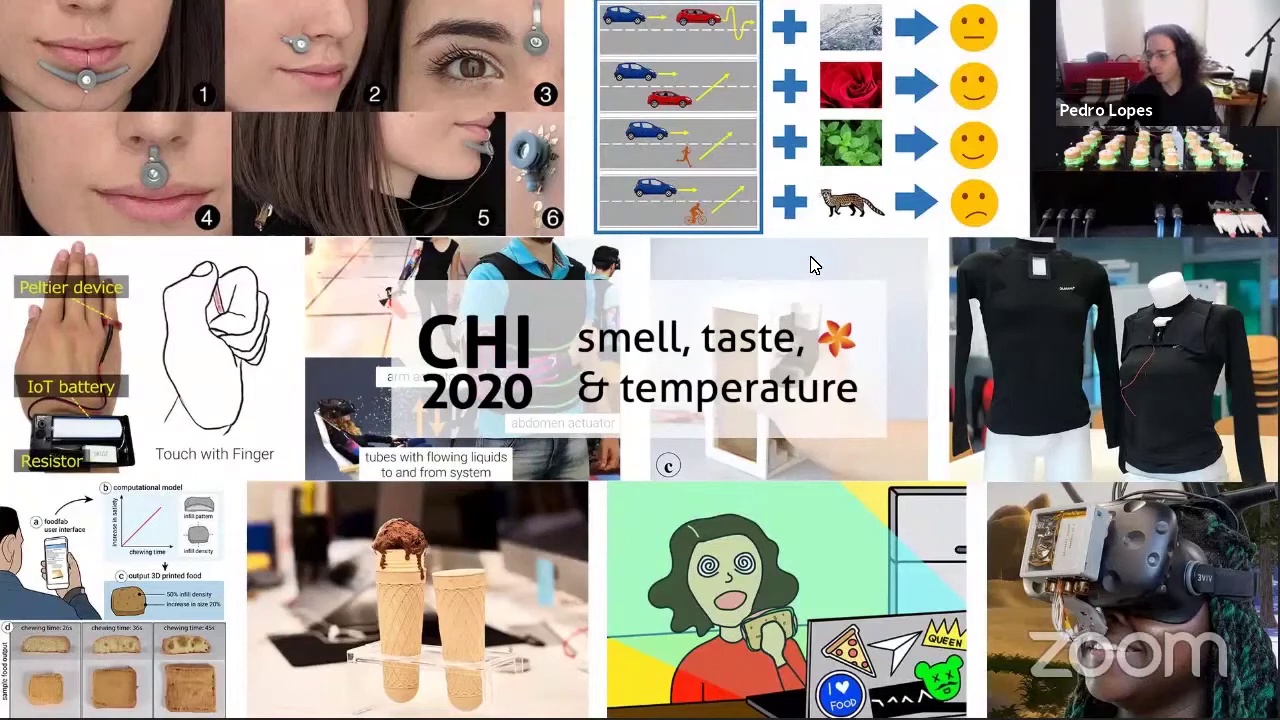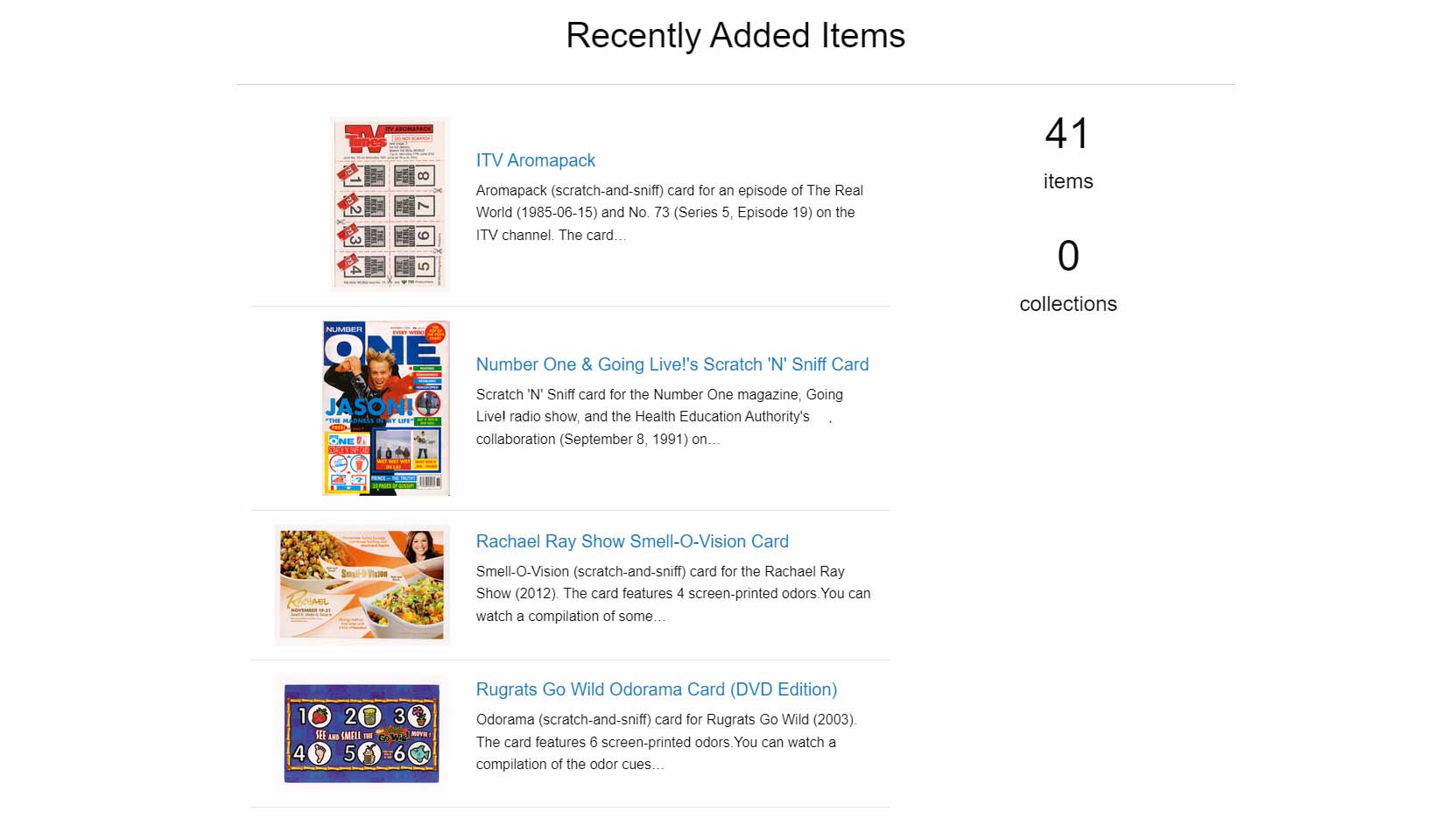News
| Jul. 02, 2024 | Honored to work with Gang "Gordon" Yu (THU), Woosang Kim (UEC Tokyo), & Janice Hixon (UChicago) this summer! |
| Jun. 07, 2024 | "Smell & Paste" received the Sadakichi Award! Thanks to the IAO and the judges! Read More |
| Apr. 22, 2024 | Jas presented their work at PAC Lab (Cornell Tech). Thanks Tanzeem, Zhao, Tan, and the whole lab! |
| Apr. 19, 2024 | "Smell & Paste" announced as a finalist for the Sadakichi Award for Experimental Work with Scent. Read More |
| Apr. 18, 2024 | Jas is a guest speaker for the MAS.S62: Cognitive Augmentation course at MIT Media Lab. Thanks Pattie & Sam! |
View All News
Key Publications from PhD Thesis: Chemical Interfaces
ACM CHI and UIST are the premier venues for technical Human-Computer Interaction (HCI) publications, which are fully peer-reviewed and have an acceptance rate of 20-25%. These are considered top-tier in the field, even when considering HCI journals, and Computer Science is a conference-focused discipline.ACM UIST 2023 Full Paper Taste Retargeting via Chemical Taste Modulators
Jas Brooks, Noor Amin, Pedro Lopes
🏵️ UIST Jury’s Honorable Mention for Best Demo
Taste retargeting selectively changes taste perception using taste modulators, chemicals that temporarily and selectively alter the response of taste receptors to subsequent foods and beverages. As our technique can be delivered as droplets before eating or drinking, taste retargeting is the first interactive method to selectively alter the basic tastes of real foods without obstructing... This work received a️ UIST Jury’s Honorable Mention for Best Demo.
ACM CHI 2020 Full Paper Trigeminal-Based Temperature Illusions
Jas Brooks, Steven Nagels, Pedro Lopes
🏆 CHI Best Paper Award (top 1%)
We explore a temperature illusion that uses low-powered electronics and enables the miniaturization of simple warm and cool sensations. Our illusion relies on the properties of certain scents, such as the coolness of mint or hotness of peppers. These odors trigger not only the olfactory bulb, but also the nose’s trigeminal nerve, which has receptors... This work received a CHI Best Paper Award (top 1%).
ACM CHI 2021 Full Paper Stereo-Smell via Electrical Trigeminal Stimulation
Jas Brooks, Shan-Yuan Teng, Jingxuan Wen, Romain Nith, Jun Nishida, Pedro Lopes
We propose a novel type of olfactory device that creates a stereo-smell experience, i.e., directional information about the location of an odor, by rendering the readings of external odor sensors as trigeminal sensations using electrical stimulation of the user’s nasal septum. The key is that the sensations from the trigeminal nerve, which arise from nerve-endings... 🏵️ Innovation by Design Honorable Mention
ACM UIST 2021 Full Paper Chemical Haptics: Rendering Haptic Sensations via Topical Stimulants
Jasmine Lu, Ziwei Liu, Jas Brooks, Pedro Lopes
We propose a new class of haptic devices that provide haptic sensations by delivering liquid-stimulants to the user’s skin; we call this chemical haptics. Upon absorbing these stimulants, receptors in the user’s skin are chemically triggered, rendering distinct haptic sensations. We identified five chemicals that can render lasting haptic sensations: tingling (sanshool), numbing (lidocaine), stinging...
ACM CHI 2023 Full Paper Smell & Paste: Low-Fidelity Prototyping for Olfactory Experiences
Jas Brooks, Pedro Lopes
Low-fidelity prototyping is foundational to HCI. So, how do experts prototype olfactory experiences? We interviewed eight experts and found that they do not because no process supports this. Thus, we engineered Smell & Paste, a low-fidelity prototyping toolkit. Designers assemble olfactory proofs-of-concept by pasting scratch-and-sniff stickers onto a paper tape. Then, they test the interaction... 🏆 Sadakichi Award (Art & Olfaction 2024)
Additional Publications in HCI
IEEE VR 2024 Full Paper ThermalGrasp: Enabling Thermal Feedback Even While Grasping & Walking
Alex Mazursky, Jas Brooks, Beza Desta, Pedro Lopes
Most thermal interfaces attach Peltier elements and their required cooling systems (heatsinks and fans) directly to the palm or sole, preventing users from grasping or walking. To solve this problem, we present ThermalGrasp, an engineering approach for wearable thermal interfaces that enables users to grab and walk on real objects with minimal obstruction. Our approach...
ACM CHI 2021 Full Paper Increasing Electrical Muscle Stimulation’s Dexterity by Means of Back-of-the-Hand Actuation
Akifumi Takahashi, Jas Brooks, Hiroyuki Kajimoto, Pedro Lopes
🏆 CHI Best Paper Award (top 1%)
We improved the dexterity of the finger flexion produced by interactive devices based on electrical muscle stimulation (EMS). The key to achieve it is that we discovered a new electrode layout in the back of the hand. Instead of the existing EMS electrode placement, which flexes the fingers via the flexor muscles in the forearm,... This work received a CHI Best Paper Award (top 1%).
ACM CHI 2021 Full Paper Elevate: A Walkable Pin-Array for Large Shape-Changing Terrains
Seungwoo Je, Hyunseung Lim, Kongpyung Moon, Shan-Yuan Teng, Jas Brooks, Pedro Lopes, Andrea Bianchi
Existing shape-changing floors are limited by their tabletop scale or the coarse resolution of the terrains they can display due to the limited number of actuators and low vertical resolution. To tackle this, we engineered Elevate, a dynamic and walkable pin-array floor on which users can experience not only large variations in shapes but also...
Academic Service
Program Committee: ACM CHI Papers AC (2024); ACM UIST Papers AC (2022, 24); ACM DIS Papers AC (2023–24); ACM TEI Pictorials AC (2024); ACM MUM Papers AC (2023).
Organizing Committee: SIGCHI Operations Committee (2021); AHs Social Media Chair (2021); UIST Video Chair (2019); UChicago Humanities UX (2022).
Session Chairing: Various sessions at CHI, UIST, and ECRO.
Peer Reviewing: Since 2018, I regularly review for leading conferences and journals related to my field (over 160 reviews), including: ACM CHI, ACM UIST, SIGGRAPH Asia, IEEE VR, ACM CSCW, ACM TEI, ACM VRST, ACM DIS, IEEE WHC, ACM IMWUT, ACM IUI, ACM IMX, Frontiers in VR, IEEE Access, IHJCS, Vernon Press, and AHs. I received three special recognitions for outstanding peer reviews from ACM CHI, six from ACM UIST, one from IEEE WHC, and four from ACM DIS.
Workshops, Panels, & Symposia
ACM CHI 2023 Panel Third Wave or Winter? The Past and Future of Smell in HCI
Participants: Jofish Kaye, Marianna Obrist, Judith Amores, Jas Brooks
We responded to the following thought: Scent technology has evolved from its use in 1960s cinema to internet peripherals in the '90s and early 2000s. With recent progress in integrating smell into Human-Computer Interaction, questions arise whether a third wave is commencing and if this field will persist or decline. The panel additionally featured a...
ACM CHI 2023 Workshop Smell, Taste, & Temperature Interfaces Workshop (STT23)
Organizers: Jas Brooks, Alireza Bahremand, Pedro Lopes, Christy Spackman, Judith Amores, Hsin-Ni Ho, Masahiko Inami, Simon Niedenthal
Third iteration of STT as a 1-day workshop at ACM CHI 2023 focused on hands-on demonstrations and sharing of methods within the community. Co-organized with Alireza Bahremand (ASU), Pedro Lopes (UChicago), Christy Spackman (ASU), Judith Amores (Microsoft Research), Hsin-Ni Ho (Kyushu University), Masahiko Inami (University of Tokyo), Simon Niedenthal (Malmö University), Jessica Lai (ASU), Mason...
ACM CHI 2021 Workshop Smell, Taste, & Temperature Interfaces Workshop (STT21)
Organizers: Jas Brooks, Pedro Lopes, Judith Amores, Emanuela Maggioni, Haruka Matsukura, Marianna Obrist, Roshan Peiris, Nimesha Ranasinghe
Second iteration of STT as a 3-day virtual workshop at ACM CHI 2021 focused on smell, taste, and temperature interfaces with invited artists. Co-organized with Pedro Lopes (UChicago), Judith Amores (MIT/Harvard), Emanuela Maggioni (UCL), Haruka Matsukura (Osaka University), Marianna Obrist (UCL), Roshan Lalintha Peiris (RIT), and Nimesha Ranasinghe (University of Maine).
University of Chicago Symposium Ada Lovelace Week 2020
Organizers: Jasmine Lu, Jas Brooks, Yujie Tao, Dasha Shifrina, Zoe Liu, Pedro Lopes
4-day symposium celebrating women and non-binary technologists from art, industry, and academia. Co-organized with Jasmine Lu, Yujie Tao, Dasha Shifrina, Zoe Liu, and Pedro Lopes.
Independent Symposium Smell, Taste, & Temperature Symposium (STT20)
Organizers: Jas Brooks & Pedro Lopes
First iteration of STT as a 1-day independent symposium showcasing CHI 2020 papers on smell, taste, and temperature interfaces. 255 people registered from over 33 countries across the world, with 152 people tuning in for the Smell Session, 93 for the Temperature Session, and 78 for the Taste Session. Co-organized with Pedro Lopes (UChicago).
Educational Resources
Fall 2018 Graduate Course ATS 4135: Virtual Reality
Jas designed and taught a graduate-level studio course at the School of the Art Institute of Chicago focused on Virtual Reality and interactive immersive media. The course integrated theory-in-practice through VR assignments, exploring topics covered in readings like immersion, metaphors of space, simulation, and telepresence. The class met 6 hours per week with 14 students,...
2022-Present Online Archive Timeless Smell Archive
The Timeless Smell Archive is an online repository dedicated to the preservation and sharing of scented media. The site features a collection of scanned images, including scratch-and-sniff cards. The archive provides a resource for researchers, collectors, and enthusiasts interested in the intersection of smell and modern culture.
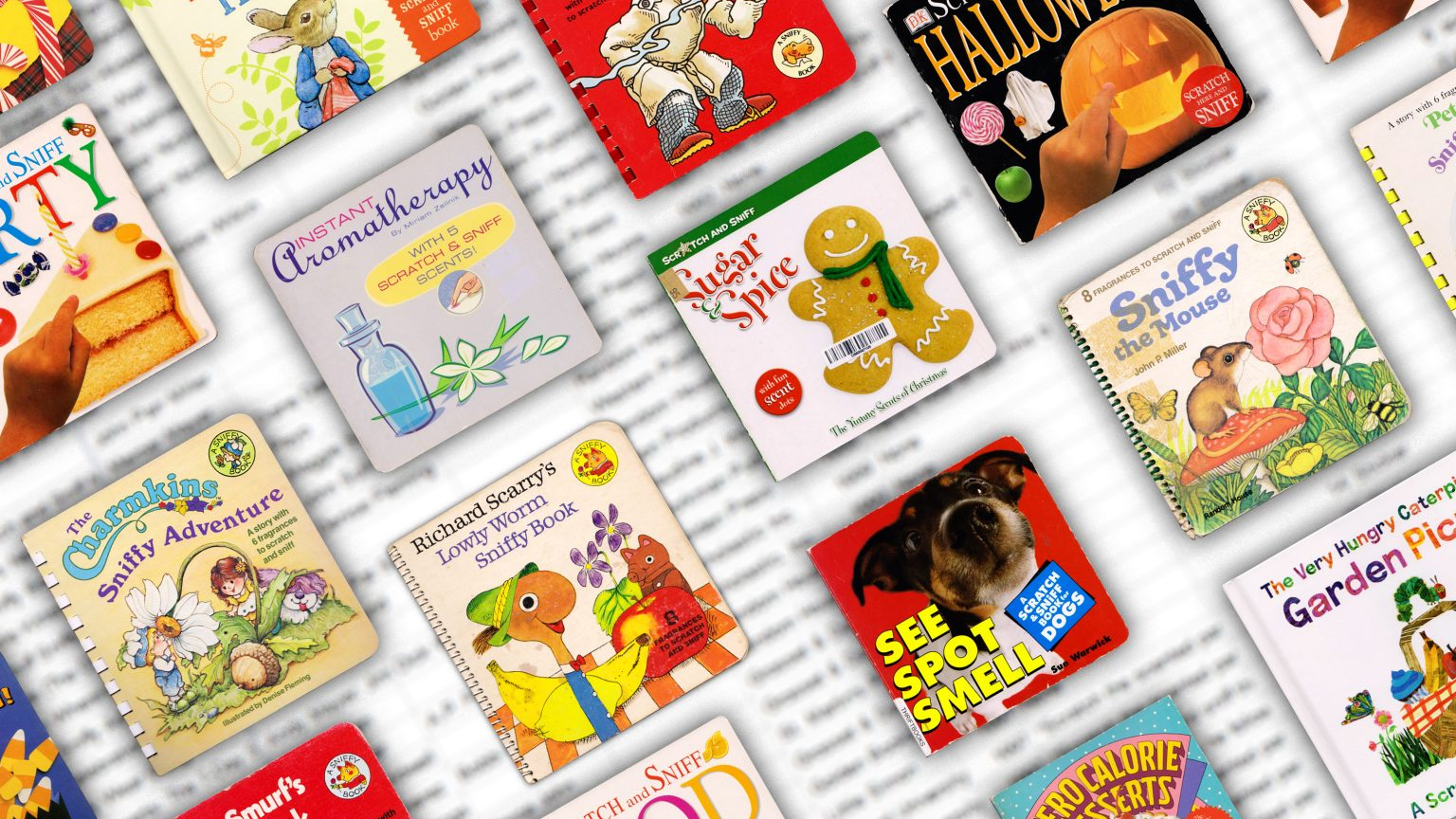
2020-2021 Dataset Scratch & Sniff Book Open Dataset
🏆 2021 Accelerator Award (Institute for Art & Olfaction)
A public dataset of scratch-and-sniff books, covering 134 titles published between 1970 and 2020. The dataset includes information on the smells used, their order, and other publication details. This dataset intended to serve as a resource for researchers, authors, and parents interested in purchasing, analyzing, or creating scratch-and-sniff books.
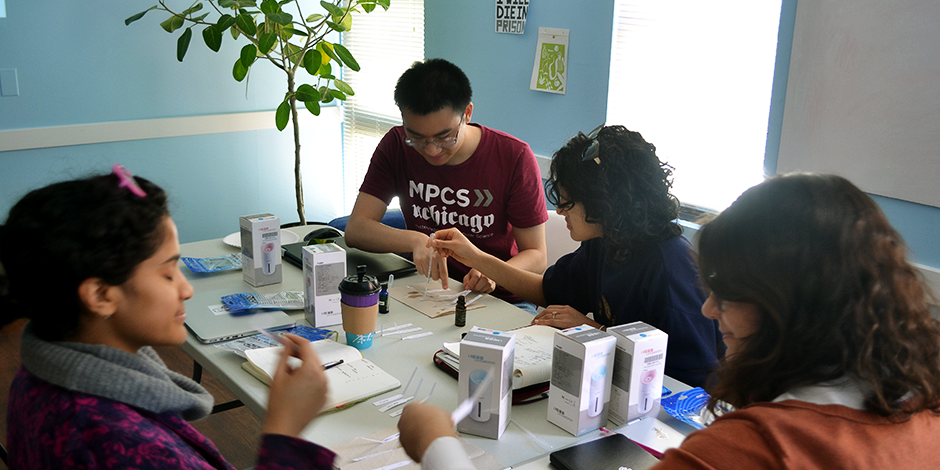
2019-2020 Sensory Education Community-Based Olfactory Research Group (CBORG)
🏆 Chicago Awesome Foundation Grant
CBORG was a collaborative, roving research team dedicated to advancing sensory education and research in Chicago. By embracing the belief that smell is a valuable skill and a way of knowing often marginalized by systems of power, CBORG aimed to make sensory education more accessible and artistically impactful, fostering an environment where individuals can engage...
